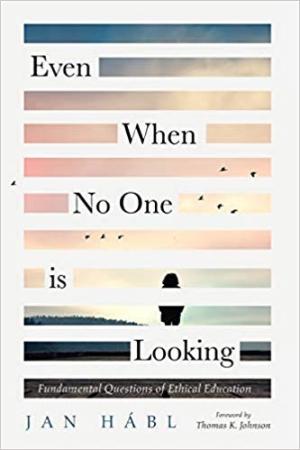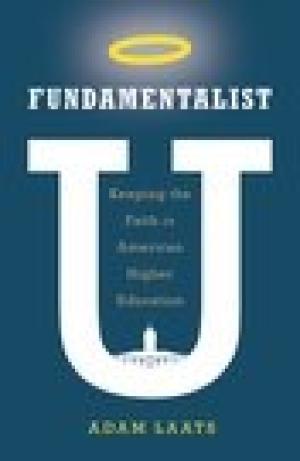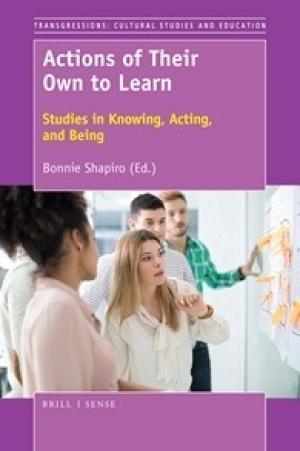Resources by Angela Cowser

This book is not a list or an overview of various theories of ethics. Nor is it a didactic manual for specific teaching units on moral education aimed at some group based on age or a particular theme (although some educational frameworks will be proposed). As the title suggests, the book intends to seek the starting points or foundations without which no moral education would be possible. The goal is to formulate and tackle the key questions that precede all moral education. What makes “good vs. evil” language possible and meaningful? Can virtue be taught and learned? What makes our actions good? What is the condition of human nature? Are we naturally good, or evil? What constitutes an educator’s right to morally influence anyone else (not just a child)? What is the goal of moral education? What does a morally educated person look like? And how can we ensure the coveted moral result? Or—in the words of Jan Amos Comenius, the “teacher of nations”—how to educate a person to not only know what is good, but also to want what is good, and to do what is good “even when no one is looking?” (From the Publisher)

The aim of Fundamentalist U is to “offer a more complete history of fundamentalist and conservative evangelical higher education” including the daily functioning of evangelicalism. The schools studied include Wheaton University, Gordon College, Biola University, Moody Bible Institute, Bob Jones University, and Liberty University. The task at all these schools is to balance academic legitimacy while maintaining reputations for religious purity. Laats defines the (evolving) distinctives of Christian fundamentalism and evangelicalism; outlines what it has meant for these schools to be “real” colleges or universities; demonstrates how the schools function as centers for both evangelicalism and fundamentalism; and examines the methods, models, and tools they have used to teach new generations of students. The distinctive realm of Christian fundamentalism includes an interdenominational religious network of K-12 schools, colleges, universities, and Bible institutes dedicated to the promulgation of orthodox Christianity and to “remaining true to the supernatural truths of real religion as revealed once and for all in the pages of an inerrant Bible” (5). It means maintaining a belligerent stance against modernism, high levels of authority vested in personalities and charismatic leaders, a defense of Whiteness, and rigid positions on race which are elevated into tests of loyalty. The distinctives of Christian fundamentalism (for example, conservatism) include a policing of all sexual behavior including homosexuality (which is framed as the ultimate sexual sin); traditional cultural attitudes around gender, family structure, and sexuality; and a constant monitoring of faculty and students regarding orthodox belief and action, in order, in part, to maintain their donor base, please fundamentalist parents, and ensure a regular flow of new students. Laats examines evangelicalism’s evolution into neo-evangelicalism, characterized by a willingness to critically examine beliefs, preparing students for missionary work, and the grafting of small government, free-market ideologies onto theology. Changing ideas about civil rights and racial equality forced schools to admit that racial segregation was an important part of evangelical character, that racial integration was “anti-Christian perversion” and that, in the 1970s, a fear of miscegenation and opposition to school desegregation orders fueled the formation of thousands of new K-12 Christian schools. Laats also outlines how the six schools studied became important intellectual centers for religious and political conservatism. The first unfortunate aspect of the book is that moderate black, brown, and white believers who are part of the evangelical tableau are not characterized. Second, a short section on what racism, anti-blackness, and white supremacy meant and still mean for African Americans is a much needed addition. That is, an acknowledgment that the toxic mix of equating whiteness with true Americanism, unqualified support of war, and the easy inclusion of conservative political orthodoxy with theology would have provided some ballast that most students and teachers would find useful pedagogically. Still, this is an excellent introductory text on (white) Christian fundamentalism and evangelicalism. It is well-researched, well-written, and a pleasure to read.

Actions of Their Own to Learn: Studies in Knowing, Acting, and Being is an edited volume of fourteen essays which explore the question of what it means to take actions of one’s own to learn. Taking action to learn happens within both formal and informal settings; it also happens during the process of building new knowledge as learners pose questions about the world and design new ways to collect and analyze information to answer those questions (4).The researchers argue that “a conception of what it means to learn must be framed as part of a larger process of building understanding that involves more than the mind” (4). In this constructivist worldview, learning “is a process in which learners are actively involved in the mental construction of ideas using prior knowledge and experiences as a foundation” (6). Building understanding (can) include participants working simultaneously as researchers, teachers, and learners (5). The book is divided into three sections: (1) the power and agency of the learner, (2) active learning with others to build knowledge and community, and (3) the environments that support active learning. In section one, through the use of a mutual learning process, researchers themselves take action to learn and understand the emerging values of the communities they study. For example, White uses autoethnography (and a carbon footprint calculator) to document changes needed to reduce her carbon footprint. She then uses her learning to design a curriculum to help her students take action to reduce their own carbon footprints. As a Provincial Parks educator, Den Hoed challenged “top-down, political, disciplined” educational processes by using Mezirow’s basic theory of transformative learning to “teach for change.” In so doing, he helps his students transform sets of fixed assumptions and expectations to be more “inclusive, discriminating, open, reflective, and emotionally able to change” (63, quoting Cranton [Understanding and Promoting Transformative Learning, 2006]). In section two, scholars who construct knowledge-building communities among disparate groups of learners (grade-school children, physics teachers, math students) have discovered that improvisational co-action, in which ideas “become taken up, built upon, developed, reworked, and elaborated upon by others,” enables shared understandings and learnings that are collectively determined: the class as a whole becomes “the body that learns” (138-140). Towers and Martin discover that improvisational learning, listening authentically to children’s ideas, and building trust helps both teachers and students evolve to see themselves as collaborators rather than competitors (12-13). Finally, section three describes environments that support active learning, including classrooms where students are in control of decisions about how scientific inquiries will proceed, and another, where people come together and create film and photographs (photovoice) to educate, build awareness, and encourage political action. These processes help students develop a deeper connection with course content (208). This book presents a variety of qualitative approaches (narrative, interviews, autoethnography, case study) to activist learning in multiple and variegated learning environments. The scholarship affirms teaching that is firmly student-centered, where teacherly authority is decentered, and power between students and teacher is shared throughout the life of the learning cycle.